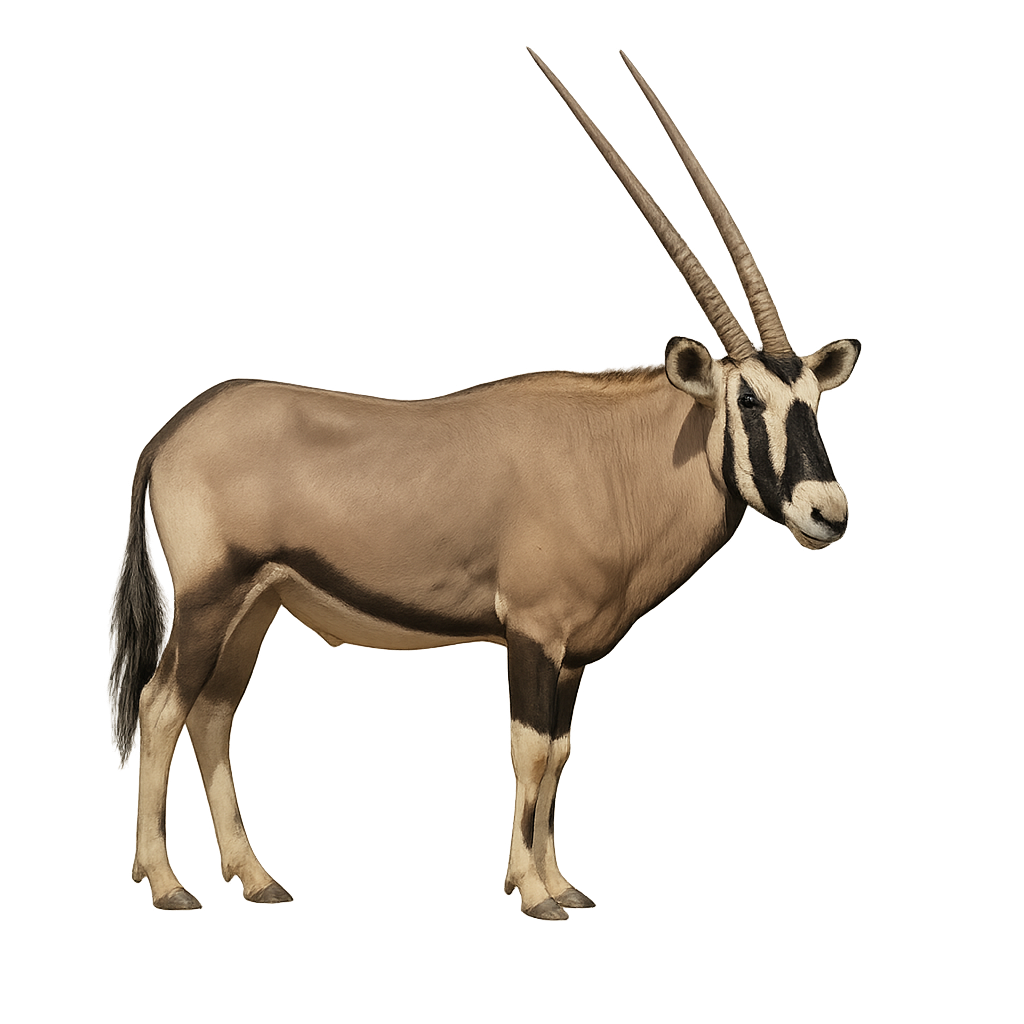Your wildlife photography guide.
Explore the beisa oryx in detail, study its behavior, prepare your shots.
Where to observe and photograph the beisa oryx in the wild
Learn where and when to spot the beisa oryx in the wild, how to identify the species based on distinctive features, and what natural environments it inhabits. The WildlifePhotographer app offers tailored photography tips that reflect the beisa oryx’s behavior, helping you capture better wildlife images. Explore the full species profile for key information including description, habitat, active periods, and approach techniques.
Beisa Oryx
Scientific name: Oryx beisa

IUCN Status: Vulnerable
Family: BOVIDAE
Group: Mammals
Sensitivity to human approach: Suspicious
Minimum approach distance: 60 m
Rut period: December to March
Gestation: 255-270 jours
Births: August to October
Habitat:
Deserts and arid savannas
Activity period :
Primarily active during the day, with peak activity in the morning and late afternoon.
Identification and description:
The Beisa Oryx is a large antelope found primarily in the arid and semi-desert regions of East Africa, particularly in Somalia, Ethiopia, and Kenya. It stands between 1.2 and 1.5 meters at the shoulder and weighs around 100 to 150 kg. The Beisa Oryx is easily recognized by its long, straight horns, which can reach up to 1 meter in length. Its coat is sandy-colored, with black markings on the flanks, legs, and around the eyes, helping it blend into its desert environment. This herbivore feeds primarily on bushes, grasses, and succulent plants. Although the Beisa Oryx is capable of tolerating extremely high temperatures, it is also well adapted to cover large distances in search of food and water. This species is currently listed as "near threatened" due to habitat loss and hunting.
Recommended lens:
300 mm – adjust based on distance, desired framing (portrait or habitat), and approach conditions.
Photography tips:
Approach slowly and discreetly, using a telephoto lens to capture images from a distance, as the Beisa oryx is a majestic but rather alert animal and can move away quickly if disturbed.
Photograph early in the morning or late in the afternoon, when the light is soft and the Beisa oryx is more active, often moving or foraging in arid savannas or plains.
Capture moments of natural behavior: The Beisa oryx is often seen in groups, moving or feeding on vegetation in open environments. These moments are ideal for group photos or dynamic portraits.
Be patient and respectful: The Beisa oryx can be sensitive to human presence. Wait for moments when the animal is more visible without disturbing its natural behavior.
The Beisa oryx is a vulnerable species due to habitat loss and poaching. It is essential to respect its natural space, not disturb its social or feeding behaviors, and follow local conservation rules to preserve this species and its habitat.
The WildlifePhotographer App is coming soon!
Be the first to explore the best nature spots, track rutting seasons, log your observations, and observe more wildlife.
Already 1 430 wildlife lovers subscribed worldwide

